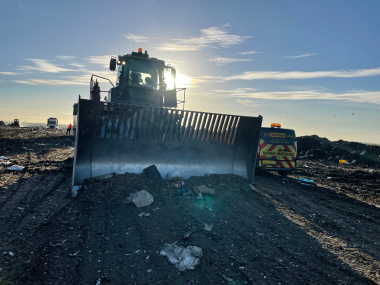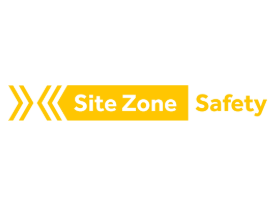Latest figures from the HSE showed an increase in fatalities in the waste and recycling sector, after five years of decline. And the third highest cause of fatalities in all sectors is being struck by a moving vehicle.
As a long-term safety partner to the waste sector, we’ve seen the benefits of focusing on behaviour change for risk reduction.
This has been proven by our biggest proximity warning system deployment across 74 sites with LARAC partner FCC Environment. They’ve had zero plant pedestrian incidents on their sites in the last 10 years.
But what makes your sector - waste, environment, and recycling – unique, and how have we worked with over 150 waste sites to help manage your plant pedestrian collision risks?

Diverse working environments
Sites are busy with lots of movement and potential for plant pedestrian interaction. But every site is different with different layouts, vehicle movements, and challenges.
This is why we always start with a site survey to understand your operations, the vehicles you use, your existing safe systems of work, and your biggest site concerns.
Pedestrians and vehicles working closely together
The very nature of the environment means that people and plant are working near to each other. And you can only go so far with substitute, segregate, and eliminate.
We can help show you which tags (people) are getting too close, too often, to which vehicles at what time of day and location on your site.
Blind spots
These are everywhere. From containers and skips to piles of packed materials, pallets, lorries, and walls. All creating blind spots where you may not see someone walking out from behind.

The beauty of a proximity warning system over say cameras or AI is that the tag is detected through materials, so the operator and pedestrian are forewarned of the risk.
Near miss reporting
This isn’t just relevant to the waste and recycling sector, but every industry.
It’s believed only around half of non-fatal accidents ever get reported. By reporting near misses, we can learn and help prevent future major accidents. But we need to ensure colleagues understand what a near miss is and create a culture where they’re not afraid to report.
We recently talked to a council who introduced an easier way to report near misses and saw a big increase in the number received thanks to the change. Being informed means you can do something about it.
Data from our system gives you near miss reports. Every unacknowledged zone breach could be a potential near miss. You can use this data to prevent future incidents.
Want to know more about improving behaviours of people around vehicles at your site? We provide a free site survey and demo. You’ll get a detailed document after the visit, regardless of whether you move ahead with us.



